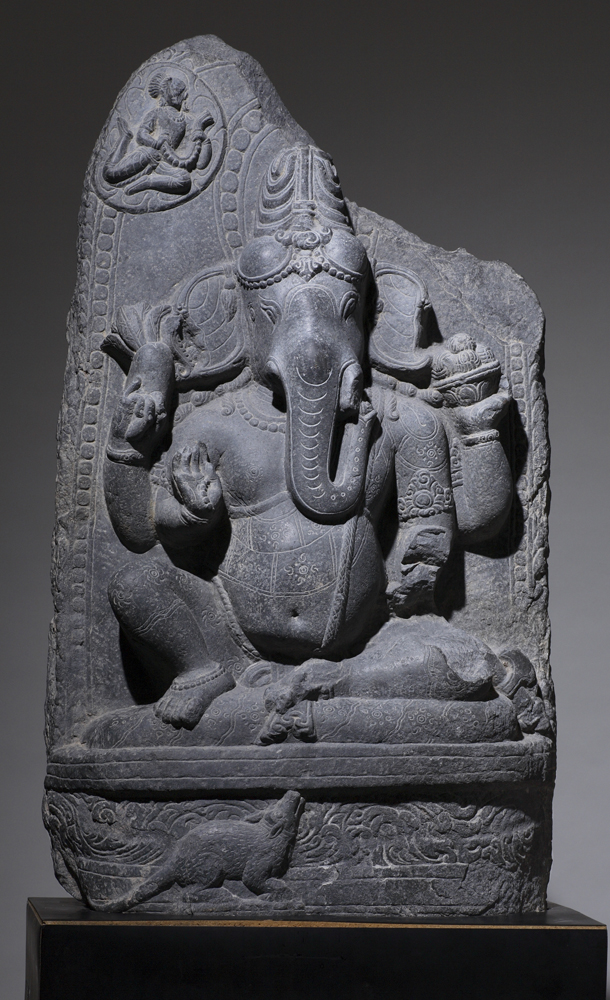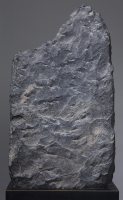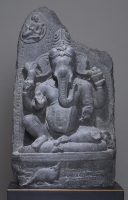Ganesha, Lord of Obstacles

Bihar or Bengal, India, or Bangladesh, Ganesha, Lord of Obstacles, 11th century, gray schist, Museum Purchase: Funds provided by Mr. and Mrs. Hugh McCall by exchange, public domain, 2008.66


This work is not currently on view.
- Title
Ganesha, Lord of Obstacles
- Artist
- Date
11th century
- Period
Pala Period (mid-8th-mid-12th century)
- Medium
gray schist
- Dimensions (H x W x D)
35 3/4 in x 18 in x 6 in
- Collection Area
Asian Art
- Category
Sculpture
- Object Type
sculpture
- Culture
Indian
- Credit Line
Museum Purchase: Funds provided by Mr. and Mrs. Hugh McCall by exchange
- Accession Number
2008.66
- Copyright
public domain
- Terms
This carved stone stele presents the elephant-headed Hindu god Ganesha, one of the most widely worshipped deities in India. Because Ganesha removes obstacles to material success and spiritual progress, he is invoked at the start of each day or at the outset of any important project. Like his father Shiva, Ganesha is a master of yoga and dancing; he is also the patron deity of wisdom, literature, and the pursuit of knowledge.
Ganesha sits erect on a cushion in the pose of royal ease, with one knee raised and the other relaxed. His plump body gives him a charming, childlike appearance, but to the philosophically inclined, his big belly signifies that Ganesha contains all the universes—past, present, and future. His garments, a kilt-like dhoti and a shawl draped across his chest, are indicated by shallow incised designs. In his four arms he holds various implements that express aspects of his personality: with his front right hand, he gestures reassurance, while his front left hand—now broken off—would have held an axe, providing protection for his followers. With his rear hands he holds a radish and a bowl of sweets, the latter symbolizing spiritual bliss.
Ganesha is attended by a celestial devotee who flies in from the upper left, bearing a garland, and by Mushika, the mouse who serves as his mount. The rodent can gnaw its way through almost any material and squeeze through narrow openings, so it knows no obstacles, making it the perfect servant for Ganesha.
This Ganesha is carved from a large block of schist, a type of metamorphic rock commonly found in sculptures from northeastern India and Bangladesh. Schist is a fine-grained stone that will retain an incised or carved design for centuries, but with a drawback: it easily splits into flakes or slabs. Such exfoliation is clearly visible at the upper right, where part of Ganesha's aureole has broken away.









